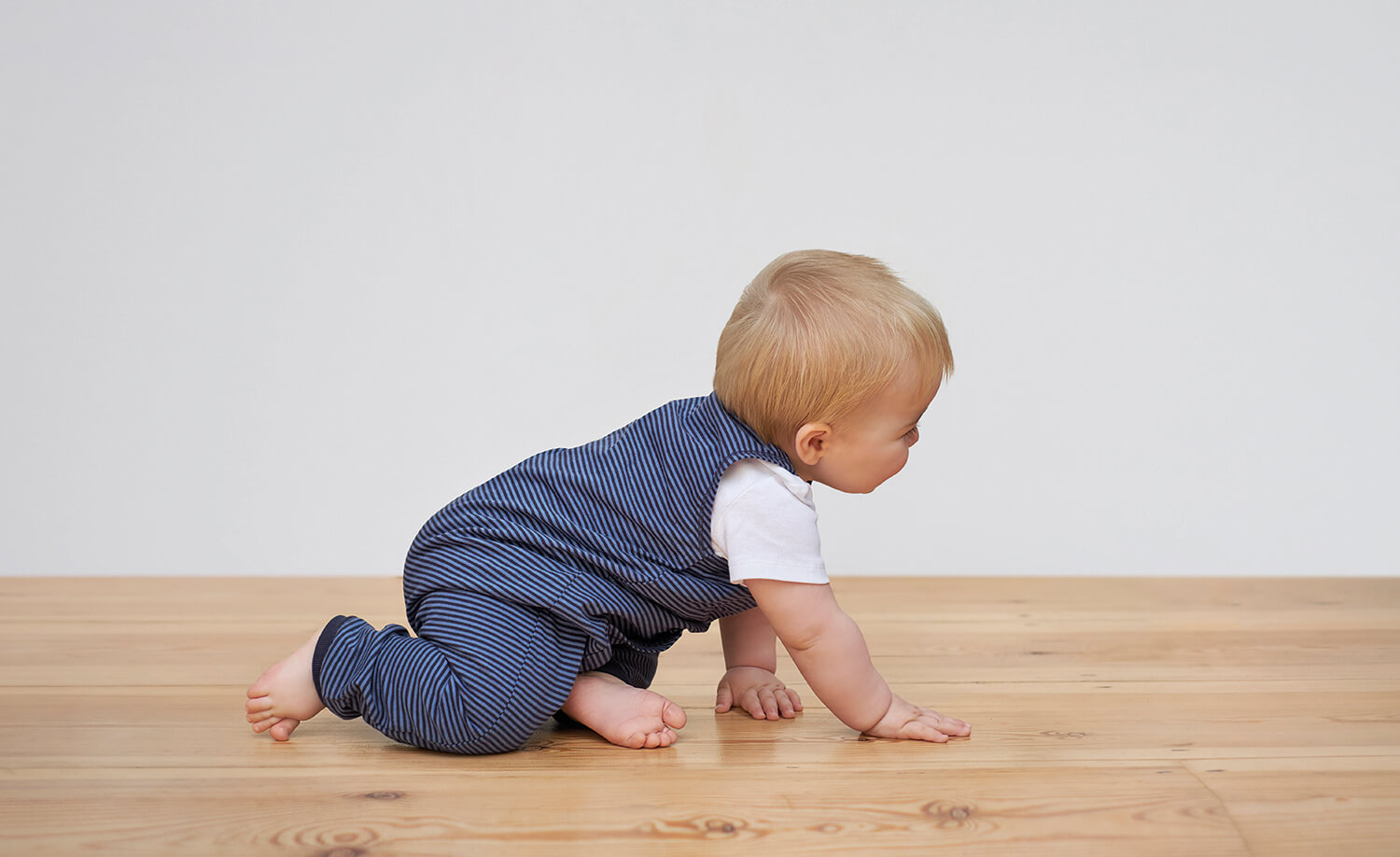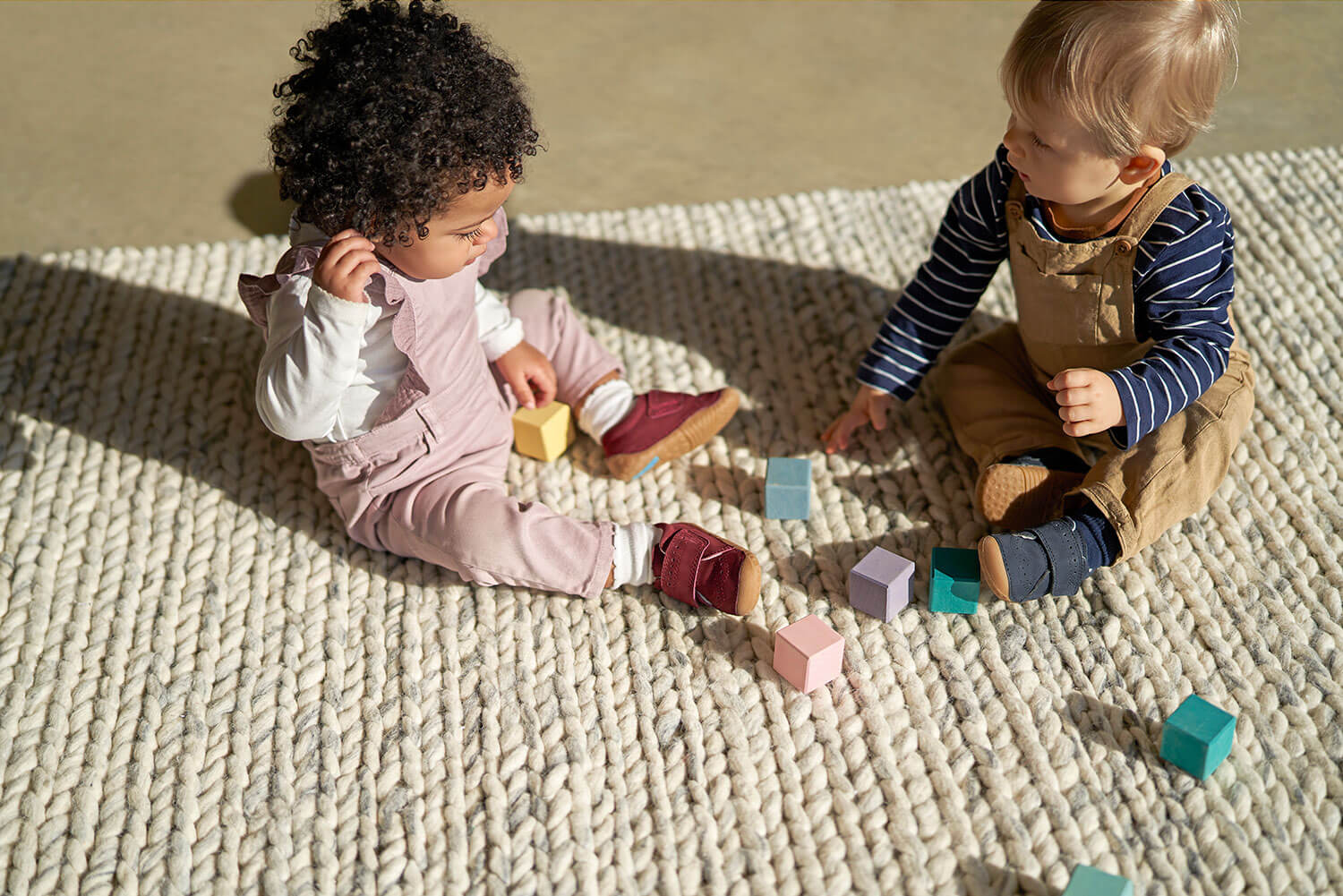The next part of our child development blogs looks at babies. Here you’ll find information on making the right foot care choices for your baby and advice on engaging the whole body through related activities suited for their life stage.

Babies’ feet have a unique structure. At this early stage, they are at their most delicate, without the hard bone structure or visible arches older children develop. Instead, their feet are soft and chubby, with cartilage rather than bones. This helps them to squeeze through the birth canal during labour, but it also means their feet are vulnerable. Cartilage is softer than bone, and can be manipulated by external pressures. In other words, ill-fitting shoes or even socks can put pressure on the cartilage within the foot and alter its shape, leading to your baby’s foot bones developing differently than planned.
You'll notice some very rapid developments at this stage, particularly in their spines. Your child’s neck will grow strong enough to support their own head and they will learn to roll over and sit on their own. This is preparing their spines to support their body while they are getting ready to start moving around.
When babies start to crawl and shuffle, and pull themselves up to standing, they’re at a new stage of development. They'll hold onto your hands, furniture, and anything else they come across as they start to use their new trunk strength and control as a platform for walking.
Some childcare facilities insist that babies in their care wear foot protection but unless you have to, don't be tempted to put them in shoes just yet as their feet aren't ready for them. Remember too that the nerve endings in babies’ feet aren’t as well developed as they will become when they get older, meaning they may not be able to tell you that their feet or toes are hurting. The best option if necessary is to have a soft protective covering to protect your baby’s feet. A loose-fitting sock with a soft leather bottom is a good example of this.
Firstly, remember that not all babies crawl - some start walking straight away, so don't worry if it doesn't seem to be happening. Either way, this stage is a fascinating time with so much to explore. Babies can get into all kinds of interesting places by shuffling or crawling, and they can get their hands on lots more too (so keep a close eye on them!)
While they can't walk independently, they usually get around with a little help from someone's hands, a piece of furniture or an elder sibling.
You could try some of these pre-walking activities to help your baby develop whilst crawling:

Pre-walking shoes:
Here at Start-Rite, we have a specially designed collection of pre-walkers which are perfect for this in-between stage in your baby’s development, allowing natural movement with the right level of support, plus protection for their uniquely soft and vulnerable feet. Start-Rite pre-walkers have the following features:
At this stage it is preferable to be barefoot to enhance the most natural development. However we understand in some situations your baby’s precious feet may need protection.
To ensure your baby has the correct fitting shoes we recommend measuring their feet every 6-8 weeks.
To read our general tips on foot health click HERE